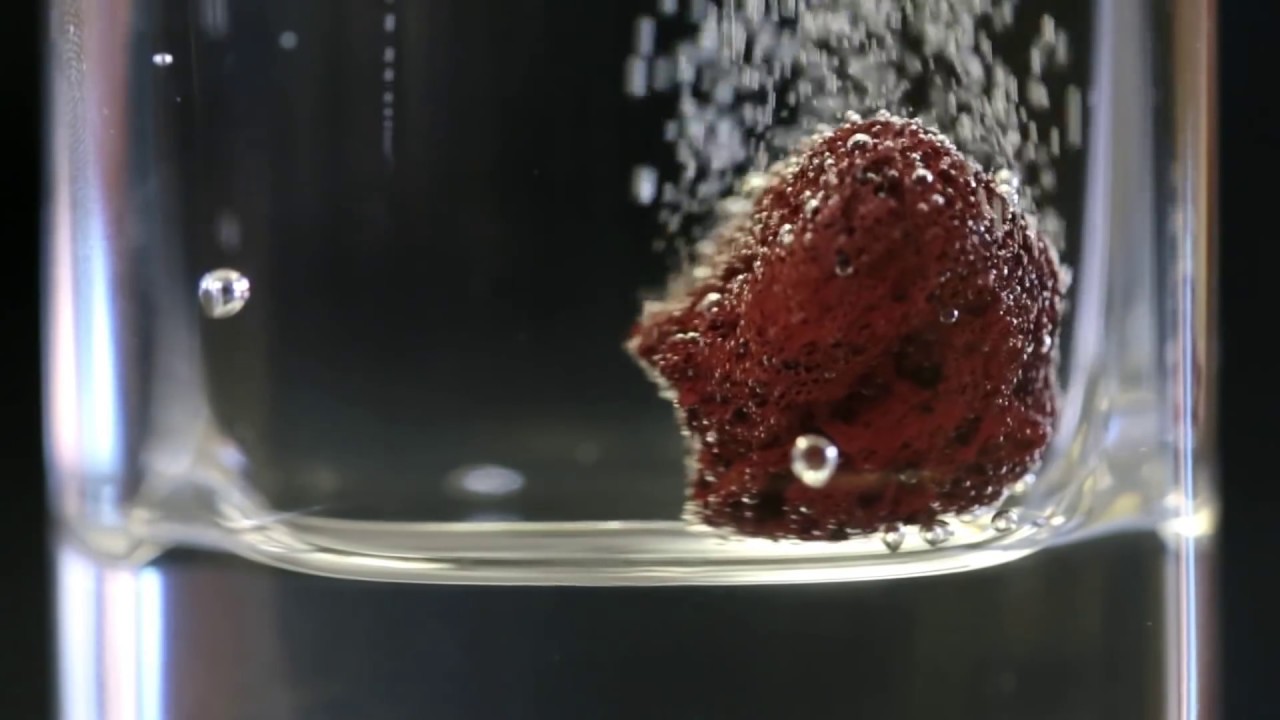Buy Cook’s Science today:
The Science of Good Cooking:
We take a closer look at carbonated beverages, from seltzer to sparkling wine, and find out what makes them bubbly—and what makes them go flat.
RELATED: Is a tall, narrow flute better for drinking champagne than a wide, shallow goblet, or is it just a matter of aesthetics? The answer:
America’s Test Kitchen is a real 2,500 square foot test kitchen located just outside of Boston that is home to more than three dozen full-time cooks and product testers. Our mission is simple: to develop the absolute best recipes for all of your favorite foods. To do this, we test each recipe 30, 40, sometimes as many as 70 times, until we arrive at the combination of ingredients, technique, temperature, cooking time, and equipment that yields the best, most-foolproof recipe.
Each week, the cast of America’s Test Kitchen brings the recipes, testings, and tastings from Cook’s Illustrated magazine to life on our public television series. With more than 2 million viewers per episode, we are the most-watched cooking show on public television.
More than 1.3 million home cooks rely on Cook’s Illustrated and Cook’s Country magazines to provide trusted recipes that work, honest ratings of equipment and supermarket ingredients, and kitchen tips.
Related posts
46 Comments
Leave a Reply Cancel reply
You must be logged in to post a comment.


You seem at the end to imply desire for more bubbles, but doesn't that mean it flattens sooner?
thanks man heterogeneous nucleation is what i was lookin for to search for a deeper dive into the physics…..140744
I am a bubble fanatic from water to wine. Love this content. Thank you 🍾🥂
Great video. The examples with the lava rock and ball bearing were very helpful in understanding how this works!
Me randomly drinking soda for the 2639th time and suddenly wondering tf are these bubbles in it and I'm here lol
What about champagne spritzers
grape Fanta
I came here to find out why canned drinks always seem flat compared to their bottled counterparts.
Rocky
Bogdanavich Jr.?
He's dressed like a Chef, but he's actually a Scientist.
Thank you, very much!
Anyone else cringe when he dropped the ball bearing?
I’m listening but I’m also thinking I want to sit on his face 😁😝
is he a chef or a fucking scientist?
flat soda is better, can't change my mind
very well put together. Does the type of water (filtered, tap, purified, spring, rain, ground etc) affect any of the attributed of the carbonated drink?
Made a test by making tiny little scraches with a tiny little needle right in the bottom center of a glass and voilà!! Bubbling like your lava rock and with a clean glass.
Time to drink Coca Cola from a champagne glass xD
I was sitting here drinking a carbonated beverage over ice and started thinking about the physics and chemistry of the solution. I assumed that the primary mechanism at play in the fizziness is the temperature differential between the beverage and the vessel. I didnt event think about nucleation sites or the equillibrium between relative co2 concentrations.
I wonder if the temperature of the co2 being used would effect the effervescence of the seltzer, or if super chilled co2 could be used to cool as well as saturate the liquid as it is carbonated 🤔
I was drinking some soda a few minutes ago and got curious. So, here I am.
Wow this ATK video is actually really good!
Very interesting to know, if I’m ever in a bar in Texas I’ll order a sarsaparilla in a dirty glass.
Finally learned why bubbles in my wine rises in stings -?
Thankyou
-Satisfied viewer
Also, having some tiny scratches in your glass can help release bubbles just like the lava rock.
dan
explainscarbonationI wouldn't want a dirty glass just to have bubbles.
There is a third way how the gas escapes: It can diffuse through the plastic bottle. That's why over years, even a sealed plastic bottle goes flat.
Do carbonated beverages go flat faster in the fridge or at room temperature? Basically what I'm asking is, should I keep my tonic water in the fridge or not? And why?
CARBO NATION Y'ALL!
* makes a C and N with hands but forgets to flip it for viewer *
i just commented on the previous video…. its simple lachatilliers principle, PM me, its free and could be worth it
why alcohol free beer???? this actually comes up in cooking alot…. private message for details
ps… i am a trained chemist… and i don't want everyone in the comments to get lost…
Im not sure if dumb question but is carbonation bad for your liver/health?
You guys could at least use celsius for water… 0 = frozen / 100 = boiling is way easier to grasp than this nonsense! 😛
Anyone who has done the soda and mentos thing is very familiar with nucleation.
4:22 his voice cracks haha.
ChampaAagne
Just a point of clarification, equilibrium does not mean that there is no movement of co2 into the liquid or into the air. Equilibrium means that the rate of movement of co2 in and out of the liquid is the same, thus there is no NET movement of CO2 in or out of the liquid.
Wouldn't you want the CO2 to STAY dissolved in the drink until it enters your mouth, where it finds countless nucleation sites to become fizzy?
more videos like this!
So from that last piece of advice, if you were to experience a perfectly carbonated drink someplace, you probably wouldn't want to eat there again.
I thought I'm watching science, until the non-metric unit shows up : /
Nucleation? Too scientific. It's food and drink; not virology.
i learned more chemistry through this video than in my current chemistry class…
Awesome, as always! : )
Thanks!
And I love your science 🙂
Great video, as always.